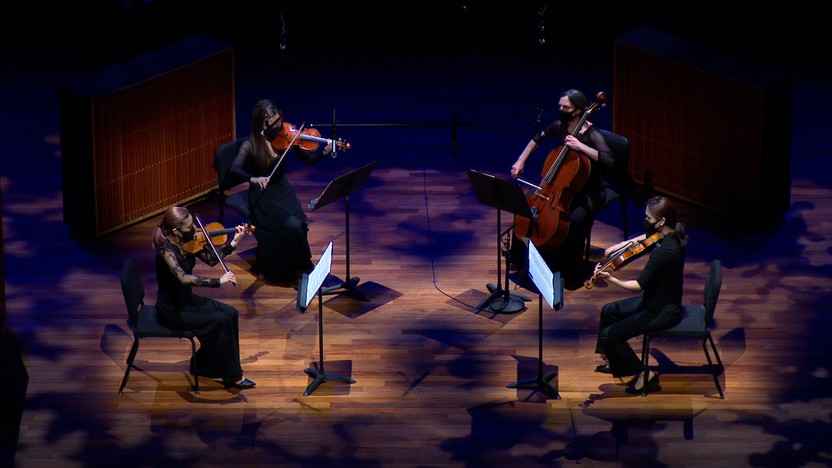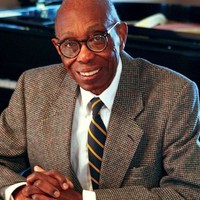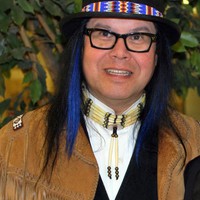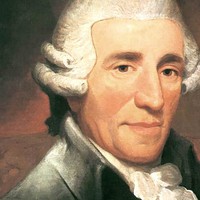Songs of Sorrow, Songs of Hope



George Walker was a vital American composer who was active right up to his death in 2018 at the age of 96. Decades before he became the first Black winner of the Pulitzer Prize for Music in 1996, he broke ground in 1945 as the first Black graduate of the Curtis Institute of Music, where he studied piano with Rudolf Serkin and composition with Samuel Barber. In an uncanny parallel with Barber, whose most celebrated music is still the Adagio for Strings adapted from the first String Quartet he wrote just after graduating from Curtis, Walker, too, is best known for the slow movement of the String Quartet No. 1 that he wrote in 1946. Originally titled Lament and dedicated to his recently deceased grandmother, Walker renamed the movement Lyric. Whether performed in its original quartet configuration or in his transcription for string orchestra, Lyric has become a fixture of American concert music.
Aaron Grad ©2021

The composer and flutist Brent Michael Davids has created works for the Kronos Quartet and Chanticleer, and his film scores and recordings capture his highly personal sound rooted in his Indigenous heritage as a member of the Stockbridge-Munsee Band of the Mohican Nation. He wrote the following note about Taptonahana, which The Saint Paul Chamber Orchestra commissioned in 2021 for flutist Julia Bogorad-Kogan.
Taptonahana translates as “we speak” in the Mahican language of the Mohican people. Most indigenous languages are generative languages (for example: Mahican, Lenape or Munsee), rather than representative (such as English). For the West, language is a means of representing something real, and words themselves stand for something by denoting it; language personifies what is thought to be ‘really real’ in Western thought. In this way, words are seen as tiny canoes that carry meaning inside them. But for Native languages, words create reality; they spawn it, and are considered generative. For indigenous people, life moves along however life is spoken, whether enacted through speech, ceremonially performed, or reciprocated with extended kinship relations.
A generative process is how indigenous music works as well, though songs are not fixed nouns for indigenous life, so more insight might come from a process of song-ing or music-ing. For Native Americans, song-ings are considered voicings of the people, and what a Native American enacts with song-ing moves life in that direction; what is sung about happens. When generative song-ing occurs, it’s like birthing out performative sequences of life. No two sequential songs are the same in the process, just as no two successive moments are identical. Indigenous cultures see music like giving birth so that each new song event is a new creation. The song being sung might be a time-honored song, but when performed it is newly reborn — it is not considered the same song.
With its mix of indigenous and Western solo flute stylings, Taptonahana brings a telling or talking into the world from a Mohican perspective. The tonal shape of the indigenous song-ing style mimics the Mahican language with sharp enunciations and whip-like releases. The songs and languages share a close bond, and Taptonahana is offered as a musical conversation, as if embracing several indigenous speakers, but enacted alone by solo flute. Taptonahana blends Western composition and indigenous song-ing for a glimpse of Mohican life, from the inside, as “we speak.”
Aaron Grad ©2022

By the 1780s, Joseph Haydn was the most popular composer alive. Bootleg copies of the works he created for the noble Esterházy family had already been circulating for decades, and as of 1779 he signed a new contract that allowed him to sell scores to publishers for his own profit. Haydn enjoyed the new experience of having international patrons and impresarios approach him directly, with high-profile commissions coming from places like Paris and London.
The commission that led to The Seven Last Words of Christ on the Cross points to Haydn’s remarkable reach. In the small port town of Cádiz, on the southwestern tip of Spain, a priest with a newly inherited fortune wanted the finest music possible for use in a private chapel he had created around an underground cave. He contacted Haydn in 1784 or 1785 and asked for a composition that could be used for a special service they held each year during Lent. Haydn later recounted the parameters he had been given:
“The walls, windows, and pillars of the church were hung with black cloth, and only one large lamp hanging from the center of the roof broke the solemn darkness. At midday, the doors were closed and the ceremony began. After a short service the bishop ascended the pulpit, pronounced the first of the seven words (or sentences) and delivered a discourse thereon. This ended, he left the pulpit and fell to his knees before the altar. The interval was filled by music. The bishop then in like manner pronounced the second word, then the third, and so on, the orchestra following on the conclusion of each discourse. My composition was subject to these conditions, and it was no easy task to compose seven adagios lasting ten minutes each, and to succeed one another without fatiguing the listeners; indeed, I found it quite impossible to confine myself to the appointed limits.”
By early 1787, Haydn completed the original version of The Seven Last Words of Christ on the Cross, scored for orchestra. Its performance history in Cádiz is unknown, but regardless Haydn had plans of his own for a work that, according to his biographer, the composer considered “one of his most successful.” Besides publishing the full score, Haydn created his own alternate version for string quartet, plus he authorized a third version transcribed for solo piano. All three editions appeared in print in 1787. After he heard another composer’s unauthorized rewrite involving chorus, Haydn worked with his learned friend Baron Gottfried van Swieten to craft an official oratorio rendition of The Seven Last Words, first heard in 1798.
The string quartet version of The Seven Last Words of Christ on the Cross preserves all the essential features of the orchestral original, including the majestic introduction. Dotted rhythms with their distinctive snap between long and short notes (and the even more pronounced effect of double-dotted rhythms) enhance the grand, imposing feeling of arrival.
Haydn used the label Sonata for each of the seven movements associated with the “words” — the dying utterances attributed to Jesus Christ in the Four Gospels. And although the music was conceived instrumentally, he used the contours of the Latin phrases to shape the main themes, with the corresponding words printed in the first violin part. Sonata I reflects on the words, “Father, forgive them, for they do not know what they do.” Every time the violin plays its initial three-note figure (a long and accented first note, followed by a quick slump down a triad), it suggests the Latin word for father, “Pater.”
Sonata II, a pulsing lament in C minor, addresses the text, “Truly, I say to you, today you will be with me in paradise.” The initial theme takes on a more hopeful character when it returns in a new major key over an accompaniment of crystalline plucks and arpeggios. It is the same kind of formal structure (a monothematic sonata form to be precise) that Haydn used so effectively in his symphonies and string quartets, used here to add emotional inflection to the sacred words.
After three preparatory chords, the tender and vibrant Sonata III introduces the phrase “Woman, behold your son.” The musical treatment always returns to the slurred gesture of two descending notes, corresponding to the first two words, “Mulier” and “ecce” in Latin, both accented on the first syllable. In the orchestral version, when the music moves to a contrasting theme, a flute comments with three more of the two-note gestures, but Haydn left that detail out of the string quartet transcription. It’s significant because there is a corollary phrase in the Gospel — “Ecce mater tua” (“Son, behold your mother”) — that Haydn did not explicitly mark in the music. Where the orchestra version suggests it audibly, the quartet seems to voice it subliminally.
Sonata IV meditates on a question: “My God, my God, why have you forsaken me?” Like a spoken question, the musical line rises at the end of the phrase; as the movement continues, each echo of that small rise functions like a reiteration of the question mark.
The loud unison entrance that introduces Sonata V seems to promise ferocious music, but then a pizzicato accompaniment arrives to usher in the humblest setting imaginable, with the violin reducing the word “Sitio” (“I thirst”) to two kindly notes. A stabbing fortissimo response exposes the underlying tension.
For Sonata VI, the quartet speaks the declarative phrase slowly in a stark unison: “Consummatum est” (“It is finished”). The music elaborates with melodies that turn sweet and almost boisterous, but those slower half-notes from the initial phrase always bring back reminders of finality.
With Sonata VII comes the final word: “Father, into your hands I commend my spirit.” Here the keyword is “Domine,” and each descending segment of three notes is like a call to the Holy Father.
The Gospels tell of an earthquake the moment that Christ died, and so Haydn added a musical Terremoto (Italian for earthquake) as a coda, complete with trembling slurs and lurching swoops to paint the scene in vivid detail. As Haydn explained to his London publisher, his aim in The Seven Last Words of Christ on the Cross had been to express the words through instrumental music, “in such a way that it creates the most profound impression on even the most inexperienced listener.”
Aaron Grad ©2021
Get driving directions and find nearby parking.
Find dining options close to the venue.
View seating charts to find out where you'll be seating.
SPCO concerts are made possible by audience contributions.
For exclusive discounts, behind-the-scenes info, and more:
Sign up for our email club!
